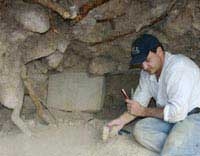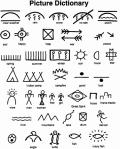Thanks to a strange magnetic field, archaeologists have discovered a tomb filled with gold and jewels…
In 2022, a team of archaeologists from Ghent University (UGent) and the Mediterranean Archaeological Society encountered an unusual phenomenon while using a magnetometer to survey the area near the city of Dromolaxia Vizatzia at Hala Sultan Tekke on the southeastern coast of Cyprus. They discovered an extraordinary abnormal magnetic field. This activity was part of an exploration program that began in 2014 on a large hill near the village of Pyla.
In the area with the strange magnetic field, they excavated and found numerous tombs dating back to approximately 1500 to 1300 BCE. During that period, the city of Dromolaxia Vizatzia was a center for copper trade. After examination, experts stated that these are the “richest” tombs they have ever excavated in the Mediterranean region.
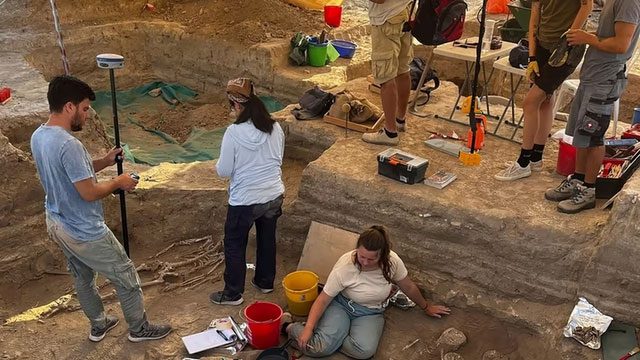
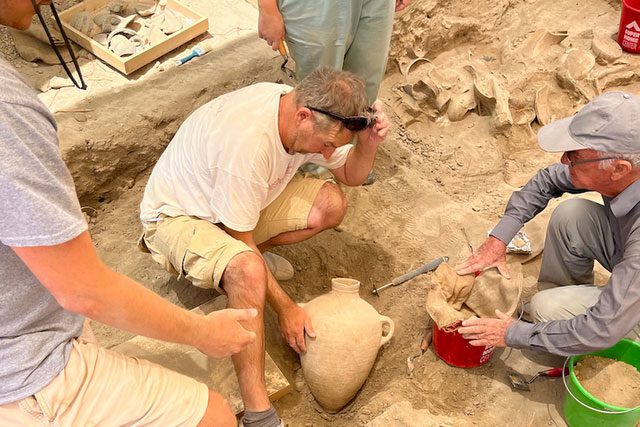
Following the trail of the abnormal magnetic field, archaeologists found several tombs. (Image: Heritagedaily).
According to Professor Peter Fischer from the University of Gothenburg, “We believe these tombs belong to royalty.”
After opening the cluster of tombs, they found two burial chambers measuring 4×5 meters, interconnected and accessible via a narrow passage leading to the surface. They unearthed over 500 artifacts, including gold, jewels, ivory, high-quality ceramics, and several bronze weapons. The materials for these artifacts were imported from neighboring civilizations. For example, gold and ivory were sourced from Egypt, jewels from Afghanistan, India, and Sinai, and amber was brought from the Baltic region.
Surrounding the skeletons, archaeologists also found crowns, necklaces, pendants, bronze mirrors, and dozens of ceramic vessels. These items could have been produced in Egypt during the 18th dynasty, during the reign of Pharaohs such as Thutmose III and Amenhotep IV (Akhenaten) and his wife Nefertiti.
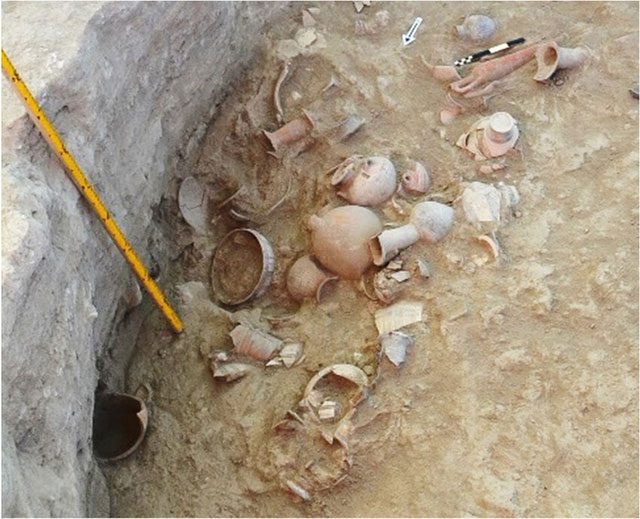
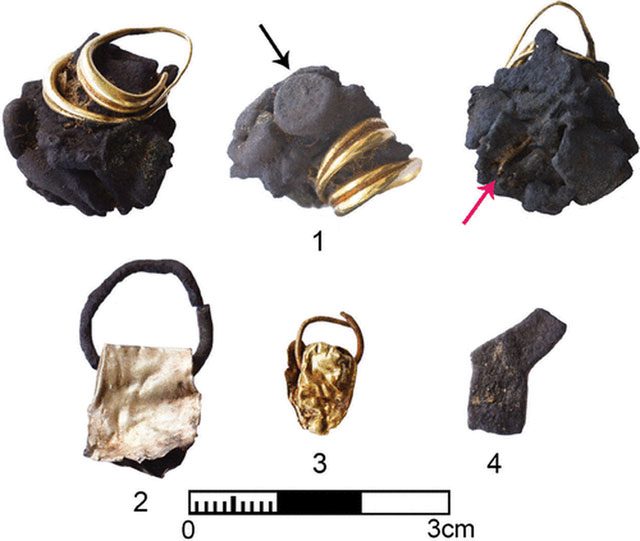
Many treasures of gold, jewels, and valuable ceramics were found in the tombs. (Image: Heritagedaily)
Documentation about ancient dynasties in the area is still limited, so scientists have not yet been able to determine whether these tombs belong to royal family members. Researchers will conduct DNA analysis and strontium isotope ratio studies on the bones to learn more about the individuals buried in the tombs and their origins.
In previous surveys since 2014, this expert team has found many valuable artifacts. Notably, one item resembling an “egg” contained a gold plate weighing 472 grams when opened. This plate is currently on display at the Larnaca Museum.
On another occasion, the archaeological team discovered a large alabaster vase decorated with lotus flowers, filled with jewelry made of bronze, ivory, and stones. This vase appears to have originated from Egypt.
These findings have demonstrated that the scale of trade in the Mediterranean region during the late Bronze Age was very robust among the various cultures in the area.









































